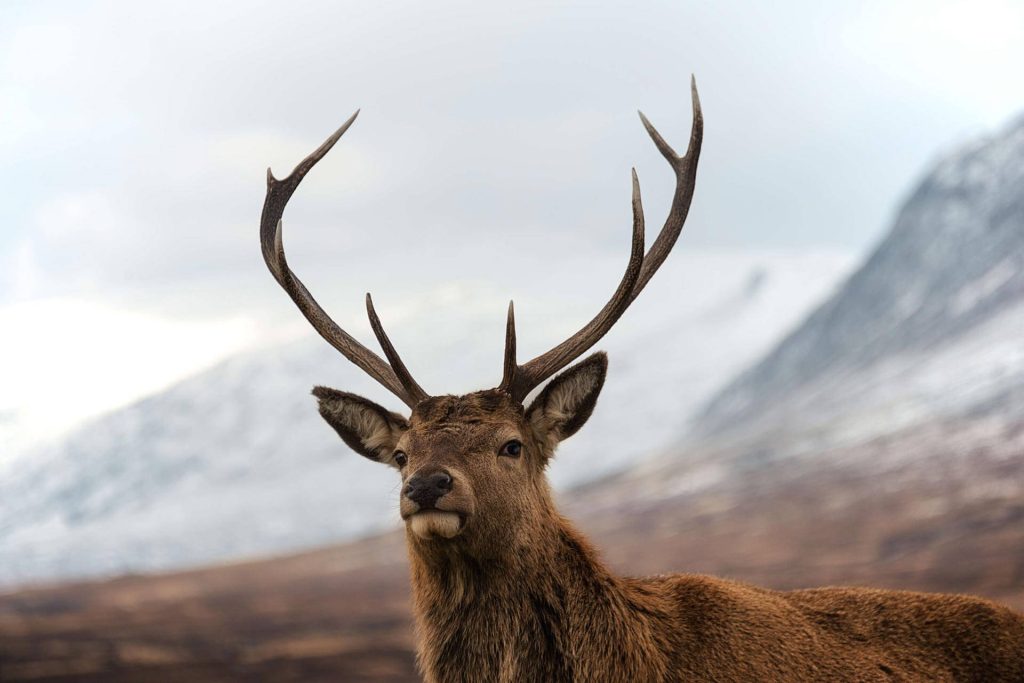One of the most amazing sights to be found in the Cumbrian countryside is the amazing Scottish Red Deer. These are some of the largest deer species in the world, inhabitants of not only Britain but also most of Europe, Asia Minor, Morocco, Tunisia, and they have even been introduced in the Americas.
Once, these amazing creatures were a rarer sight in Europe. However, reintroduction and conservation efforts in Britain mean that they have become much larger in number and wider spread.
The red deer is a magnificent beast and reason enough to wander through Cumbria in search of it. One sight of this king of the wild and you will have an astonishing memory to last a lifetime! But, what do you need to know before you go in search of one?
The ancestor of the red deer is found in the fossil record as far back as 12 million years ago. Red deer are a hearty species, surviving changing climates and conditions across the world. A testament to the sheer adaptability of the species.

This is represented in the fact that the red deer is also the largest non-domesticated animal that still exists in Ireland. Indigenous populations are also widespread in Scotland, the Lake District and even the South West of England. Some of these herds are a hybrid form of deer, due to the attempt to supplement the population and due to hunters attempting to increase antler size over a period of time. ‘Carted’ deer have also been known to escape and assimilate to indigenous populations – these were captive deer kept in areas with no population in order for hunts to take place. Usually, they were captured again after the hunt was complete. But in some cases, the deer escaped and started a new line in the area.
In recent year there have been a number of census which have shown the red deer population of Britain to be becoming more and more widespread. The range of the red deer wandering is becoming larger, perhaps due to the increased conservation efforts and less hunting.
Red deer are distinctive – as the name suggests – for their stunning red coats. They are also incredibly large, only exceeded in the deer species by moose, elk, and sambar deer. The Scottish red deer also varies from its Asian cousins by having a much longer tail. As the deer is so expansive around the world there are a number of variations in the species that can be noted. For example, red deer in Corsica are smallest in size and in antler size while the largest of the species is found to the west of the Caspian Sea.
However, no matter where the red deer is located the hinds are always much smaller than their male counterpart. Typically, some male ranges between 175 and 250cm long, whilst a hind is only 160 to 210cm. This means that they also range greatly in weight; the heaviest stag being 250kg and the hind being only 170kg in comparison. The male red deer have thickset necks, giving them the appearance of neck manes, to support their heavy antlers.

These antlers are seasonal, growing in the spring and shed every year around the end of winter. The antlers are made of bone and can grow (surprisingly) at a rate of 2.5cm per day! Antlers grow as a result of the testosterone in the stag, so the more he has the larger and fiercer they will grow – as such, they are shed in winter due to testosterone being at its lowest so far removed from the mating season.
Winter also means that the red deer grow thicker coats to account for the colder weather. These coats are often brown or grey in colour, as the lighter coat blends more with the harsher seasonal environment. This is shed again by the time summer comes, usually as a result of rubbing against trees and leaving large clumps throughout the forest.
Overall, the red deer is a magnificent sight to behold in the wild. Such a strong and hearty creature makes the natural territories of our country that much richer and fuller.
And if you need a place to stay a while, we’re perfectly placed to provide a luxury self-catering base, ideally situated for visitors to the Lake District and Yorkshire Dales. Ready to start your deer spotting adventure? Get in contact with us online or call 01524 276 500 to find out more about our self catering holiday cottages.